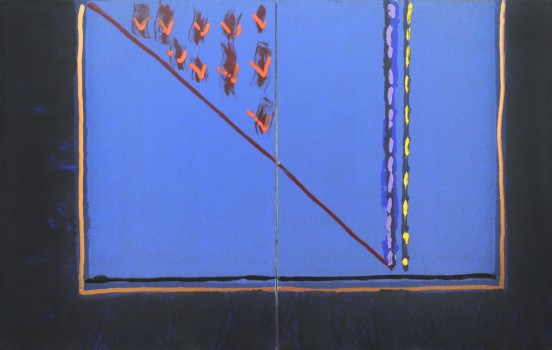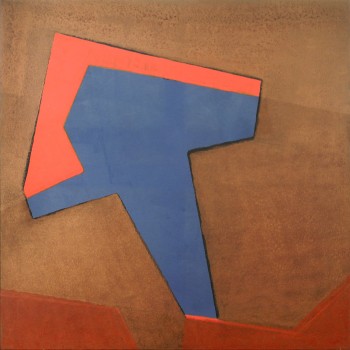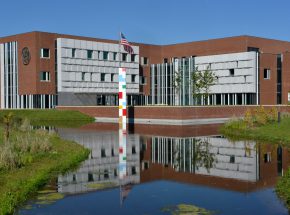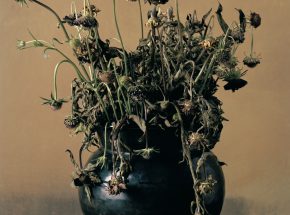

Willem de Looper was born in 1932 in The Hague, Netherlands. After the end of World War II, de Looper became fascinated by American publications, most notably The New Yorker magazine. The articles on art and music, as well as the advertising and depictions of New York found in the pages of The New Yorker inspired de Looper to move to the United States in 1950, joining his brother in Washington, D.C. Following his parents’ wishes, he enrolled at American University to study economics and business, but soon changed his major to Fine Arts. De Looper spent the two years following his graduation in the United States Army in Germany. While stationed there, de Looper used his spare time to read art journals and magazines and to visit major museums throughout Europe. He returned to Washington in 1959 and was hired as a guard at The Phillips Collection (then The Phillips Gallery), where he could see works by the artists he admired: Paul Klee, John Marin, and Arthur Dove. He made notebook drawings emulating their work and also pursued his career as an artist. His first solo exhibition took place in 1966 at Jefferson Place Gallery in Washington. De Looper continued both his painting and his work at The Phillips Collection and moved on to become assistant curator and eventually curator at the museum.
Although de Looper is most often identified as a second-generation Washington Color School artist, his oeuvre taken as a whole reflects a distinct and independent style. Using color as his primary form of expression, de Looper creates softly nuanced, process-oriented compositions that have a self-contained, reflective quality. De Looper’s works from the 1960s consist of fields of color stained into the canvas. In the 1970s de Looper created a series of large-scale paintings characterized by horizontal bands of subtly harmonizing color. In his abstract works of the1980s, de Looper developed a more brilliant palette, more varied compositions, and a marked freedom of brushstroke and gesture. De Looper’s artistic production has been prolific. He has painted on every surface imaginable, from postcards and notebooks to enormous canvases. His finished work is often painted on stretched, raw canvas, laid on the floor to allow the artist to manipulate it—twisting and turning it to control the flow of paint.
De Looper painted consistently throughout his career at The Phillips Collection, participating in exhibitions in various galleries in Washington and around the country. In 1975 and in 2002, The Phillips Collection hosted solo exhibitions of his works, and five of his paintings are in the museum’s permanent collection.
http://www.phillipscollection.org/research/american_art/bios/delooper-bio.htm



